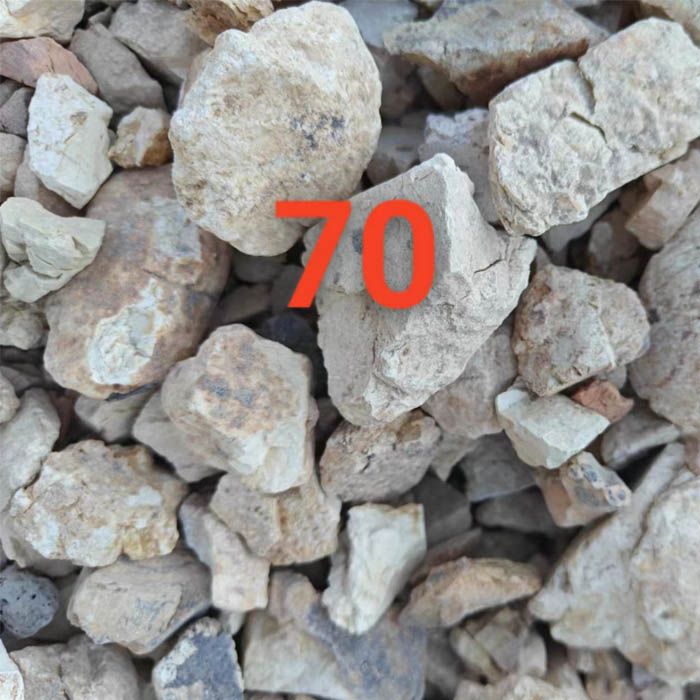Dec . 06, 2024 05:34 Back to list
Exploring Materials for Heat Conduction and Insulation Properties in Engineering Applications
Understanding Thermal Conductors and Insulators
Thermal conductivity is a fundamental property of materials that describes their ability to conduct heat. It is a crucial factor in various applications, ranging from construction and manufacturing to electronics and thermodynamic systems. Understanding the difference between thermal conductors and insulators not only helps in selecting the right materials for specific applications but also enhances our comprehension of energy efficiency and thermal management in different environments.
Thermal Conductors
Thermal conductors are materials that allow heat to flow through them easily. Metals are typically excellent thermal conductors due to their free-moving electrons, which facilitate the transfer of heat. For instance, copper and aluminum are widely recognized for their high thermal conductivity. Copper boasts a thermal conductivity of about 400 W/m·K, making it a popular choice for electrical wiring and heat exchangers. Aluminum, while not as conductive as copper, is still an effective conductor with a thermal conductivity around 205 W/m·K, often used in cookware and heat sinks.
Other materials, such as diamond, although not a metal, also exhibit exceptional thermal conductivity, even surpassing that of copper. With a thermal conductivity of approximately 2000 W/m·K, diamond is particularly useful in high-performance applications that require efficient heat dissipation.
Despite their advantageous thermal properties, the use of thermal conductors must be balanced with other factors such as weight, cost, and electrical conductivity. For instance, while metals are great for heat transfer, they can also carry electrical currents, which might not be desirable in certain applications.
Thermal Insulators
In contrast, thermal insulators are materials that resist the flow of heat. They are characterized by low thermal conductivity, meaning they do not allow heat to pass through easily. Common thermal insulators include materials like fiberglass, polystyrene, and wool, which are widely used in construction for insulation purposes.
thermal conductors and insulators materials

Fiberglass, for instance, has a thermal conductivity of around 0.04 W/m·K, making it an ideal choice for insulating buildings. It is lightweight, non-flammable, and resistant to moisture, thereby improving energy efficiency in heating and cooling systems. Another example, polystyrene, often used in foam packaging and insulation panels, has similar thermal properties and is effective in reducing thermal transfer in various settings.
Natural insulators, such as wool and cotton, also play an essential role in thermal management. Besides their thermal properties, they are biodegradable and environmentally friendly, appealing to sustainability-focused applications.
Applications and Importance
The choice between thermal conductors and insulators has significant implications in multiple fields. In the construction industry, effective thermal insulation reduces energy consumption for heating and cooling, leading to lower utility bills and environmental benefits. In electronics, thermal conductors are employed in heat sinks and thermal management systems, ensuring that devices operate efficiently and do not overheat.
Moreover, in manufacturing and food preservation, understanding thermal conductivity leads to better designs of ovens, refrigerators, and packaging materials that maintain product quality and safety.
Conclusion
In summary, thermal conductors and insulators play vital roles in numerous applications across various industries. Their contrasting properties enable designers and engineers to tailor materials to fit specific thermal management needs. As technology continues to advance and energy efficiency becomes increasingly critical, the development and application of innovative thermal management solutions using both conductors and insulators will remain an area of great interest and importance. Understanding and leveraging the properties of these materials not only enhances product performance but also contributes to a more sustainable and energy-efficient future.
-
Eco-Friendly Granule Covering Agent | Dust & Caking Control
NewsAug.06,2025
-
Fe-C Composite Pellets for BOF: High-Efficiency & Cost-Saving
NewsAug.05,2025
-
Premium Tundish Covering Agents Exporters | High Purity
NewsAug.04,2025
-
Fe-C Composite Pellets for BOF | Efficient & Economical
NewsAug.03,2025
-
Top Tundish Covering Agent Exporters | Premium Quality Solutions
NewsAug.02,2025
-
First Bauxite Exporters | AI-Optimized Supply
NewsAug.01,2025
